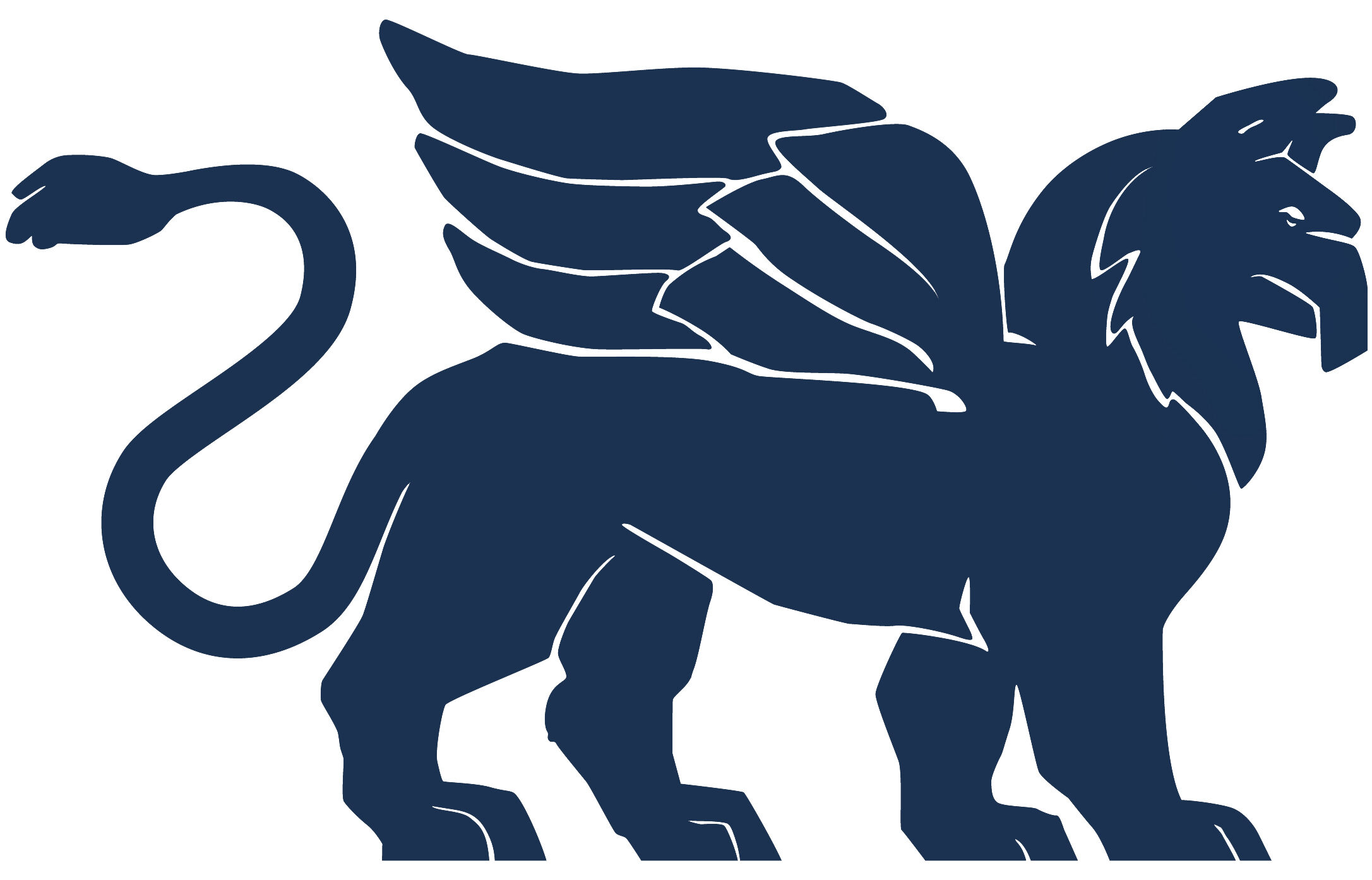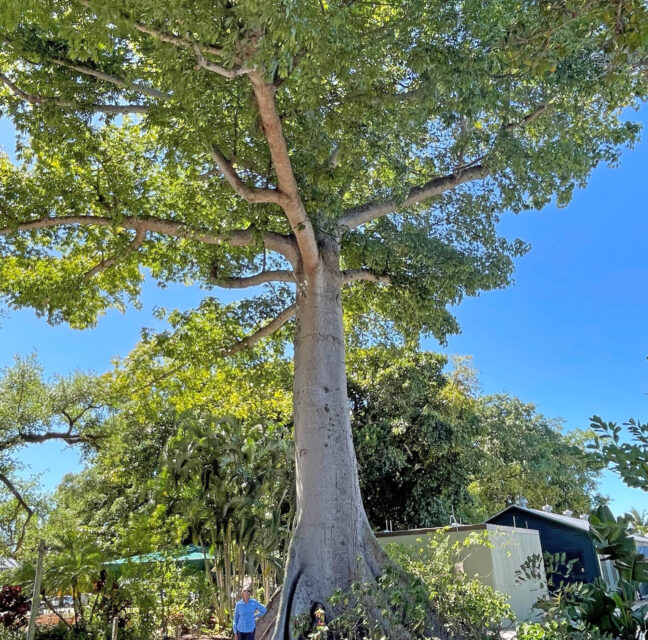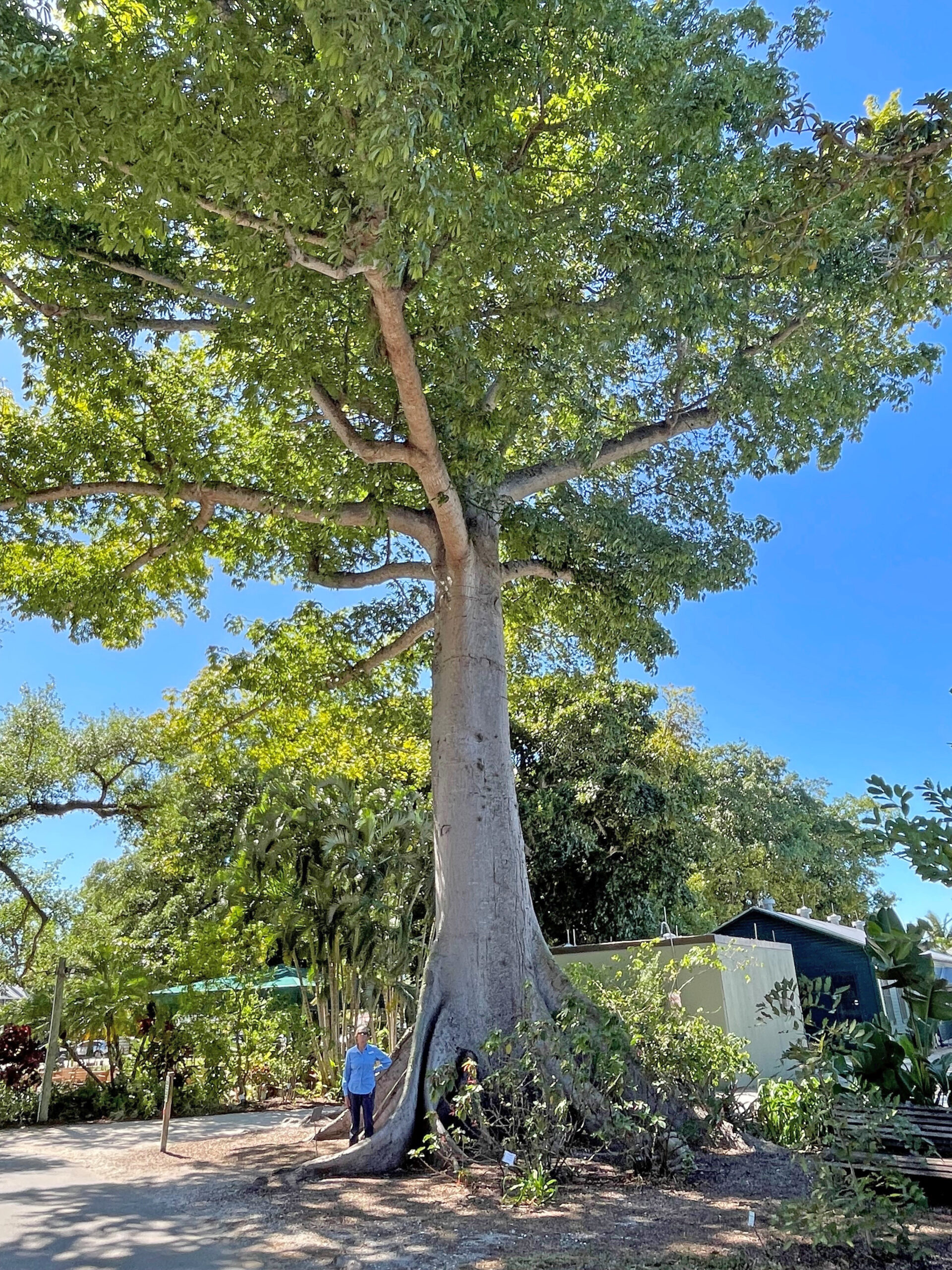
When visitors to Edison and Ford Winter Estates walk toward the museum from the parking lot, the first giant tree that they encounter is often the majestic Kapok. Commanding in several aspects, this tree was designed to and has withstood many hurricanes, trucks rolling over its protruding roots and extended periods of drought. The tree is stabilized by 15-feet-high buttress roots that offer an interesting backdrop for guests taking photos. This tree is the tallest species in South America and Africa.
Ceiba pentandra is a member of the Malvaceae family of plants and trees. Kapok is a modern name from Malay, meaning tree. Ceiba is the indigenous Spanish tribal name (pronounced “Say”-ba) and pentandra refers to the five (penta) stamens of its flowers, which range in color from cream to pale pink. Historically here at the Estates, there are many references to this tree’s cousin, the red silk-cotton tree (Bombax ceiba) which has grown on the riverside since the 1930s per the historical tree inventories. While the silk-cotton trees are native to Asia and Africa, Ceiba pentandra is native to Central and South America.
Considered the tallest species that grows in the Amazon rainforest, it is no wonder that the Hometree in the movie Avatar was modeled after this gray giant. To the ancient Mayans, the Ceiba pentandra was considered the symbol of the universe. Though not native to Africa, it is believed that the buoyant and waterproof seed pods of the Kapok managed to float across the seas and land on the African continent – today it is the largest tree that grows in Africa and has served as landmarks for rural villages.



THE MAJESTIC KAPOK IS THE LARGEST TREE IN SOUTH AMERICA AND AFRICA. VISITORS CAN SEE THIS TREE AT EDISON AND FORD WINTER ESTATES.
The name Kapok has been used interchangeably over the years to also refer to the silk-cotton trees because they produce a similar seedpod, full of seeds attached to fluffy silk (floss) collars to aid in their dispersal. Bombyx is a Greek word, meaning silk and this silk allows both Ceiba and Bombax seeds to travel more than 50 miles in wind.
In Java, the Kapok is an important agronomic commodity due to its fast growth, becoming productive within six years. Known to grow more than a foot a year during its first few years, the tree is documented to reach heights of more than 200 feet in its native habitat. Kapoks require excessive amounts of water during their young growth years.
I happened to be present one day, when a malfunctioning waterline was uncovered, quite close to the base of the Kapok – it is possible that our gorgeous king of the forest had the benefit of an unrestricted water supply for many years, promoting its enormous growth. We’ll never know for sure. As it matures, the Kapok becomes deciduous during the winter, a survival tactic when water is scarce, to be followed by spring flowering and maybe seedpod production. The Kapok seeds consist of about 25% oil, similar to cottonseed oil; after extraction it is used in cooking, soapmaking and for lubricants. The plush “floss” was once used to make mattresses, and more importantly life jackets, due to its light weight and buoyancy; however, once the flammability factor was discovered, its use was discontinued for life jackets.

In addition to its massive buttress root systems, the tree, and its cousins, are instantly recognized for the sharp points that grow lower on the trunk, presumably to deter herbivores that would enjoy its tasty leaves. Similar to our collection of Bombax trees, the spines are very dominant on young trunks and disappear from the trunk as the trees age and gain stature.
Another identification trait of the Kapok or Ceiba species is its flattened crown – its few branches appear high on its trunk and open across a horizontal plane. I have been photographing this tree over the years and have included some dramatic pre- and post-hurricane photos. When Ian knocked large pieces of branches down, we found that they too, were covered in the same sharp spines seen lower on the Kapok trunk. It is believed that the architecture of the tree helps it secure the most amount of sunlight, with branches that only grow above the dense rainforest canopy. The smooth thin bark of the Kapok discourages attachment of any vine that may threaten the tree, and so we should be incredibly careful to protect the delicate bark on the trunk and roots to prevent entrance of disease or rot to this magnificent specimen.
The large leaves are coated with a waxy finish to minimize transpiration during the hottest days and the large surface area of those leaves allow the Kapok to take full advantage of fog or humidity for water intake.
Sometime in late spring, the Kapok should begin to flower. Our tree is so tall now that it would be difficult to get a good close view of the flowers, though one bloom did fall into the driveway, and I was able to photograph it. It is written that the flowers emit a pungent odor to attract its primary pollinator, a bat, to its offerings. Scientists have discovered in Kapok, an ability to convert from a fully self-incompatible flowering tree when pollinators are abundant, to a high level of self-pollination when pollinators are scarce.
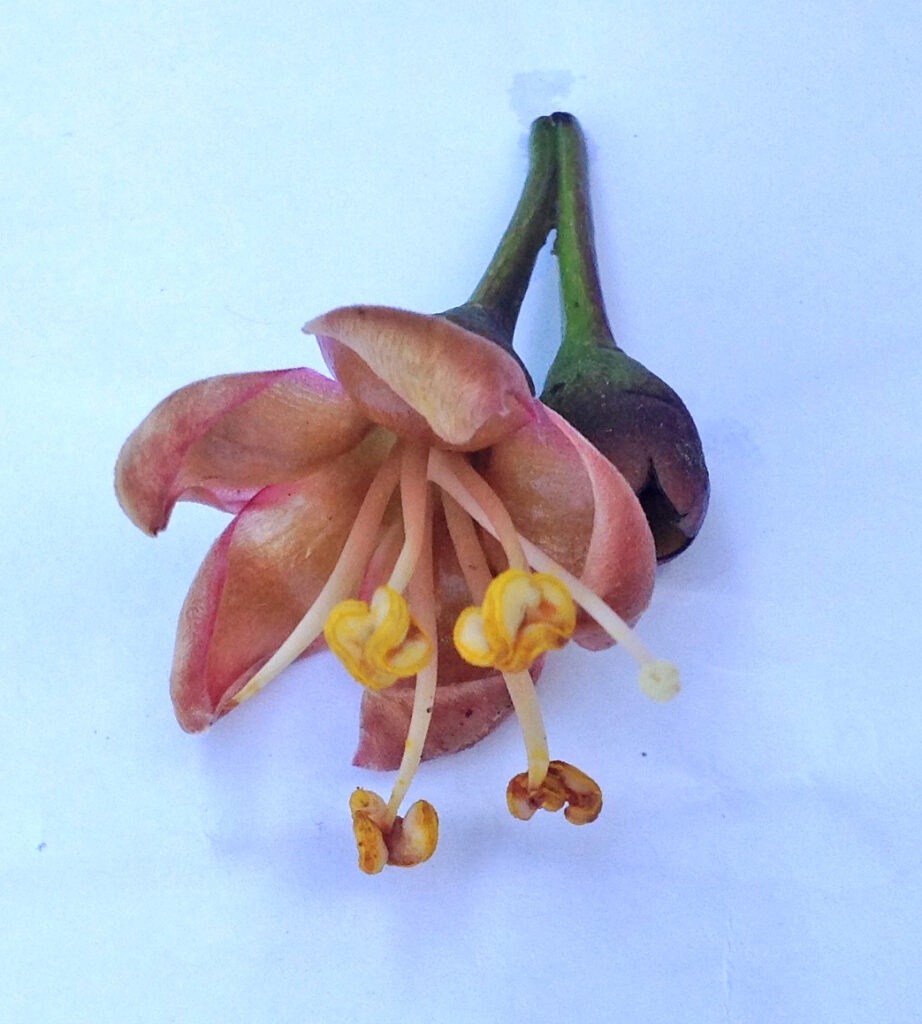
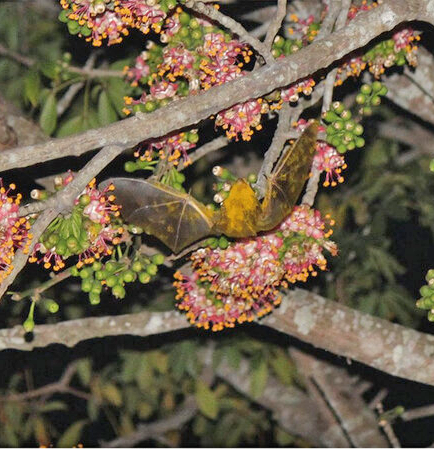
While the Kapok may also be pollinated by moths, it is believed that bats are much more efficient in the process. Included in today’s article is an open-sourced photo from Research Gate where the photographer used white light to capture the Artibeus bat of Jamaica and one can clearly see the bat’s body covered in yellow pollen. According to the Florida Bat Conservancy, this particular bat has been spotted on very infrequent occasions in South Florida; but it does make me wonder how someone would know if they’re visiting the top of our Kapok under the cover of darkness? Or are moths and bees pollinating it?
A close relative is the Floss Silk Tree (Ceiba speciosa), which many readers will recognize as the showy tree covered in pink blossoms in mid-autumn, typically around late October. A gorgeous specimen adjacent to the Garden Council building in the Berne Davis Garden was lost during Hurricane Ian. Some materials refer to this tree also as Kapok because their trunks are similar and the seedpods are quite similar, but the Ceiba speciosa only grows to about half the height of a fully grown C. pentandra. The beautiful Floss Silk (sometimes also called Silk Floss – either way is acceptable) was inventoried on our historic property during the 1930s garden tours.
My research into where our Kapok ranks with others in the United States turned up some interesting results. On the site “Monumental Trees,” the Edison Ford’s Kapok photographs are the most frequently viewed of U.S. Kapoks. The last posted measurements were in 2015, where the circumference or girth was indicated as “greater than 4 meters” and the “height unknown.” We hope to update those records in the coming weeks. While clearly not the largest in the world – that record seems to belong to a Ceiba pentandra in Costa Rica that has a recorded height of 198 feet. Perhaps there is a new place in the record books for our Kapok.


